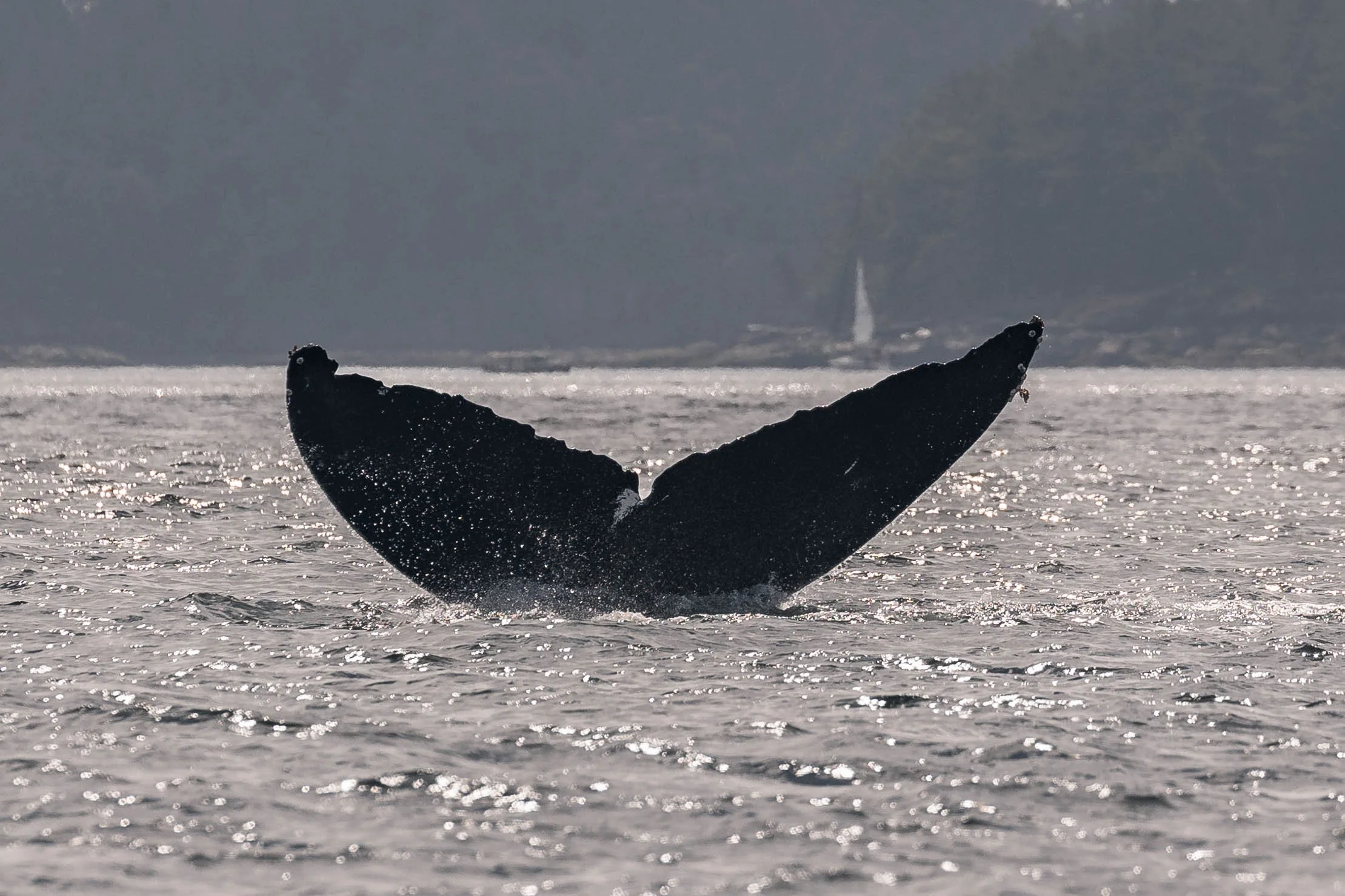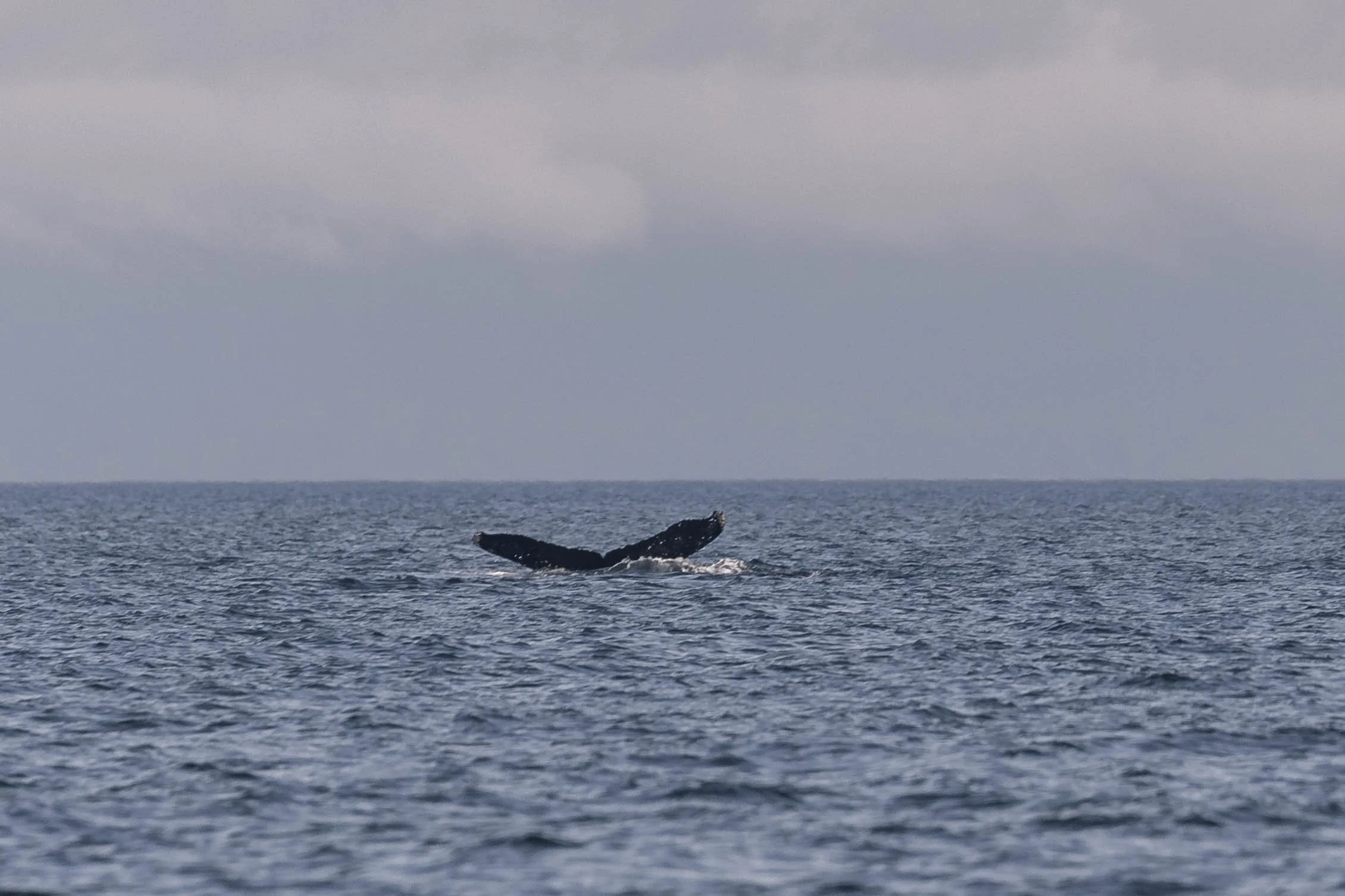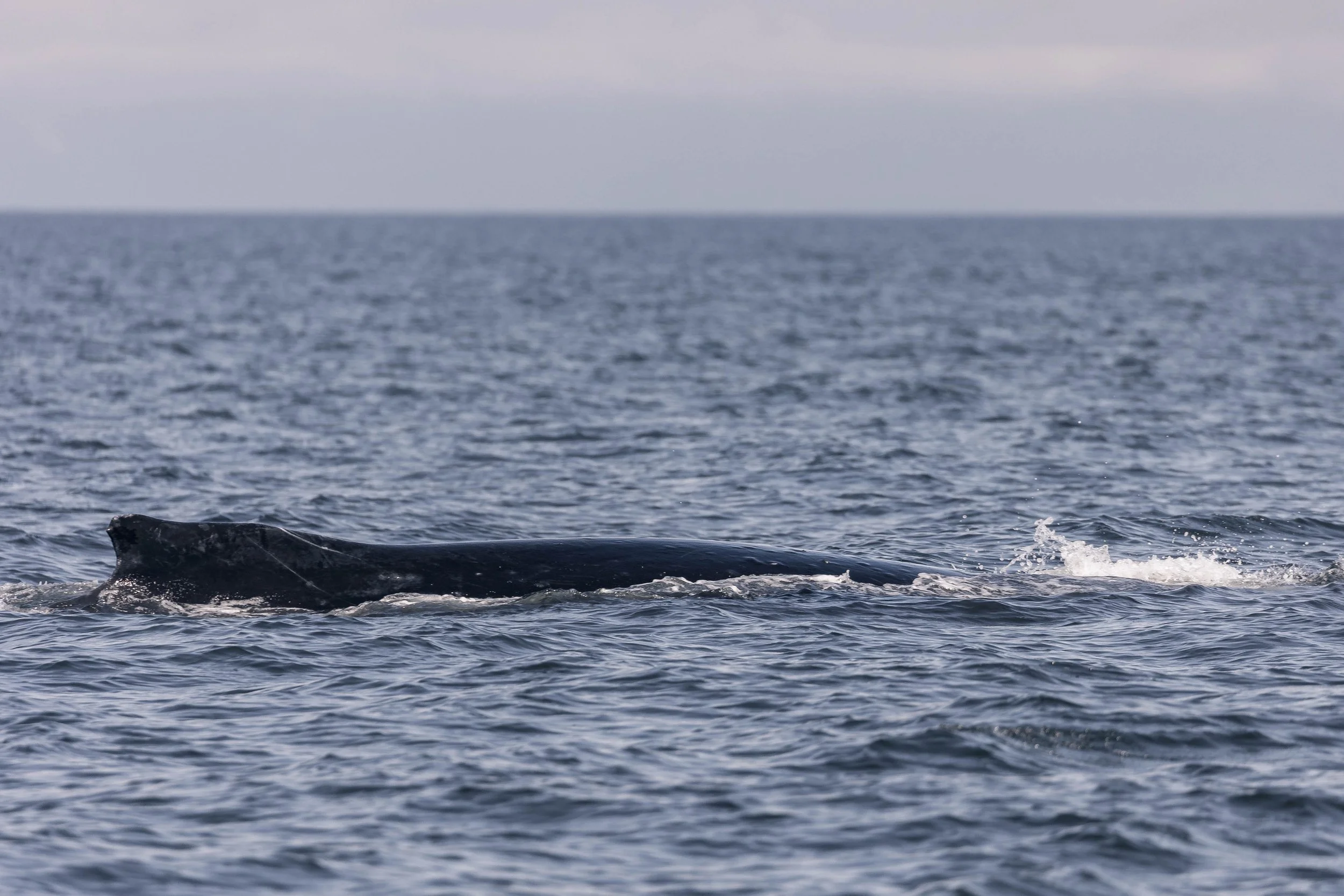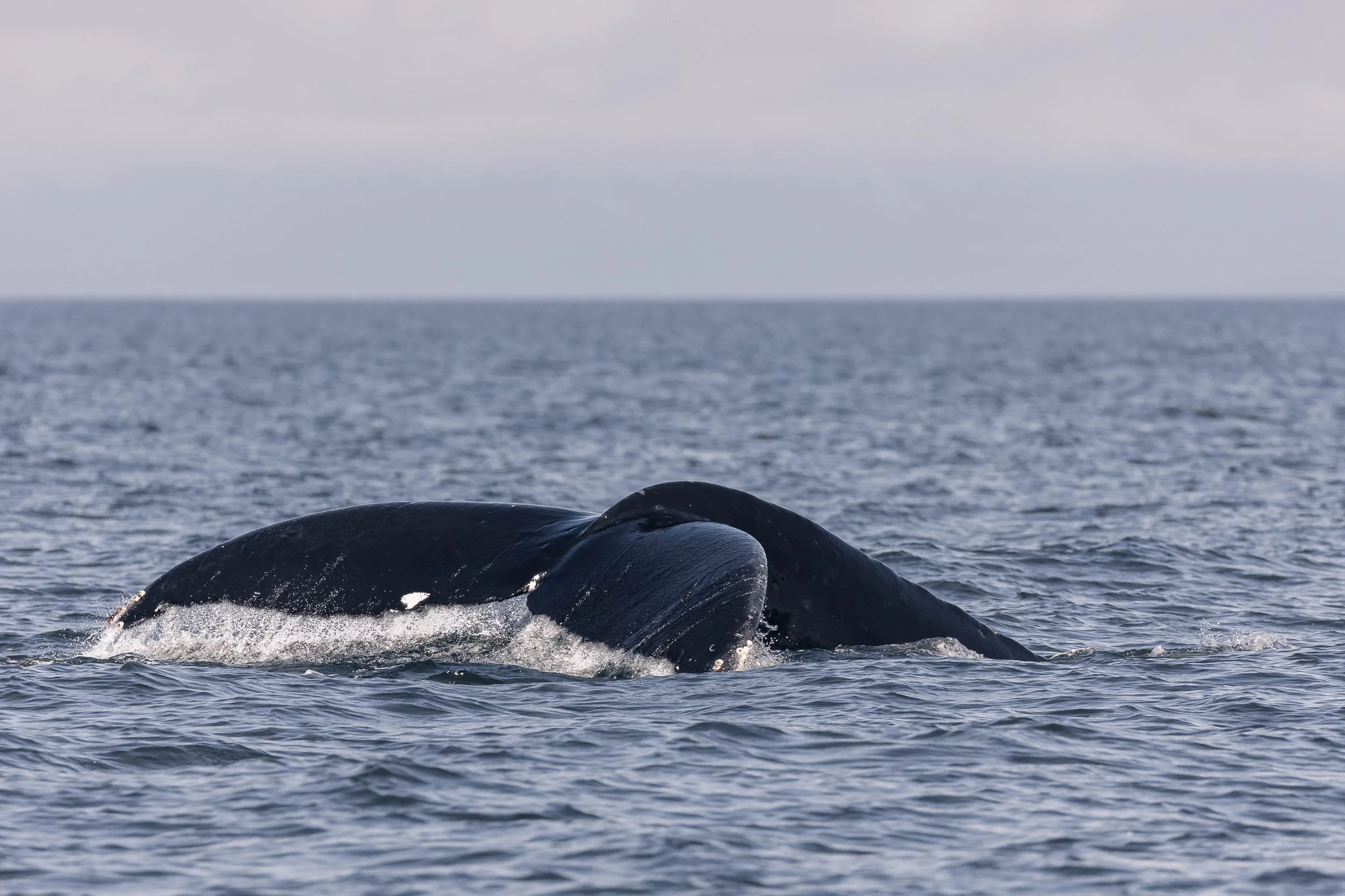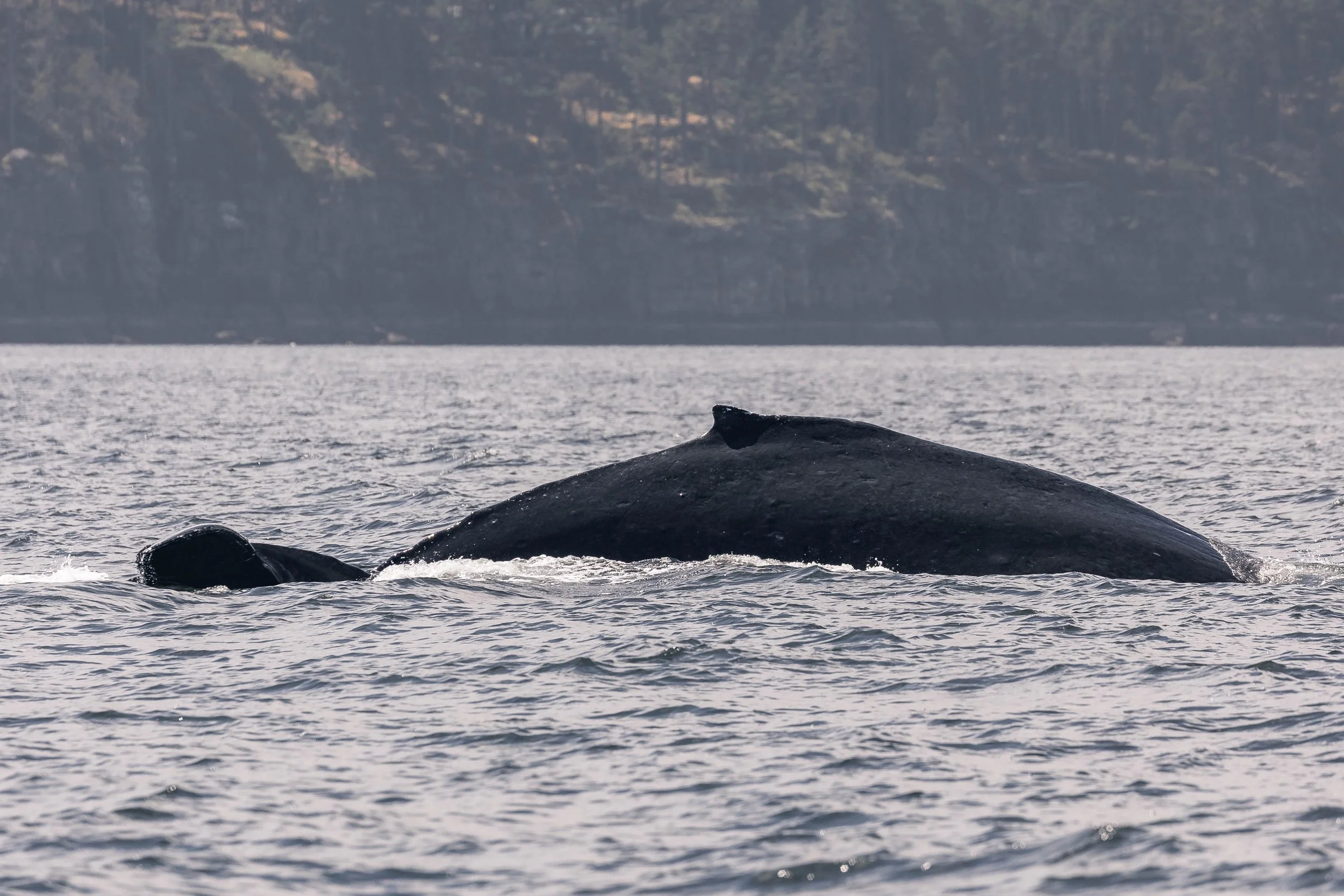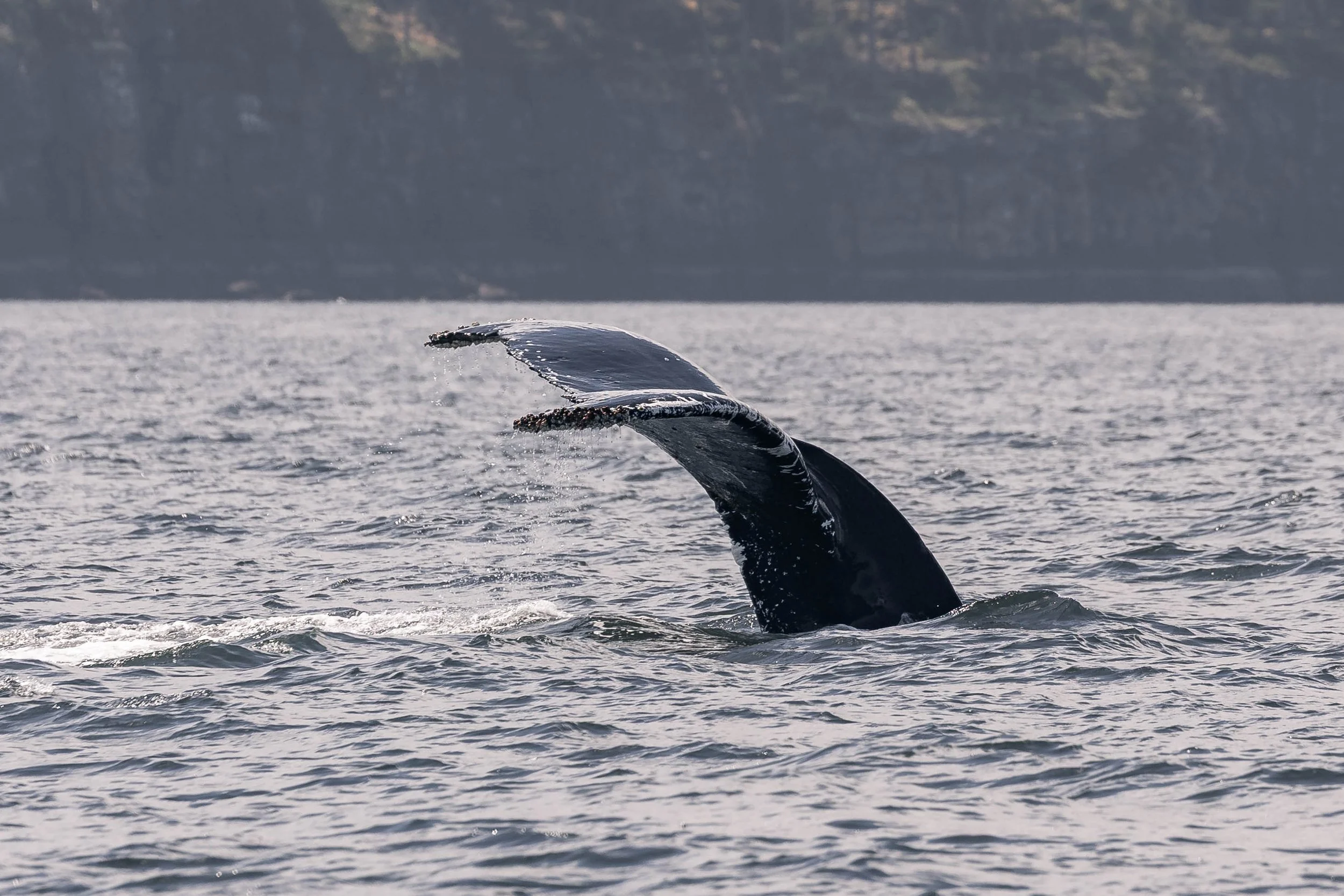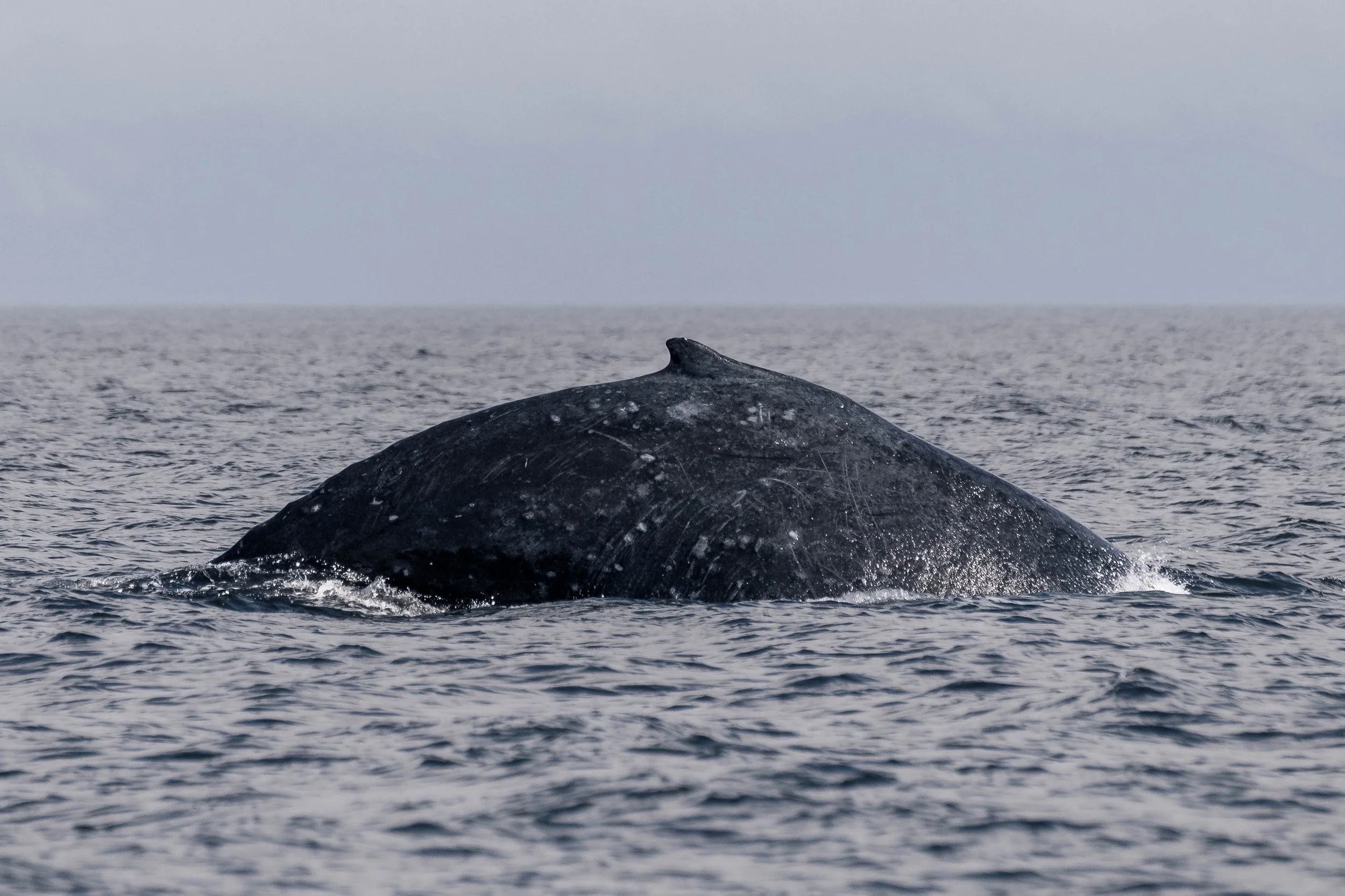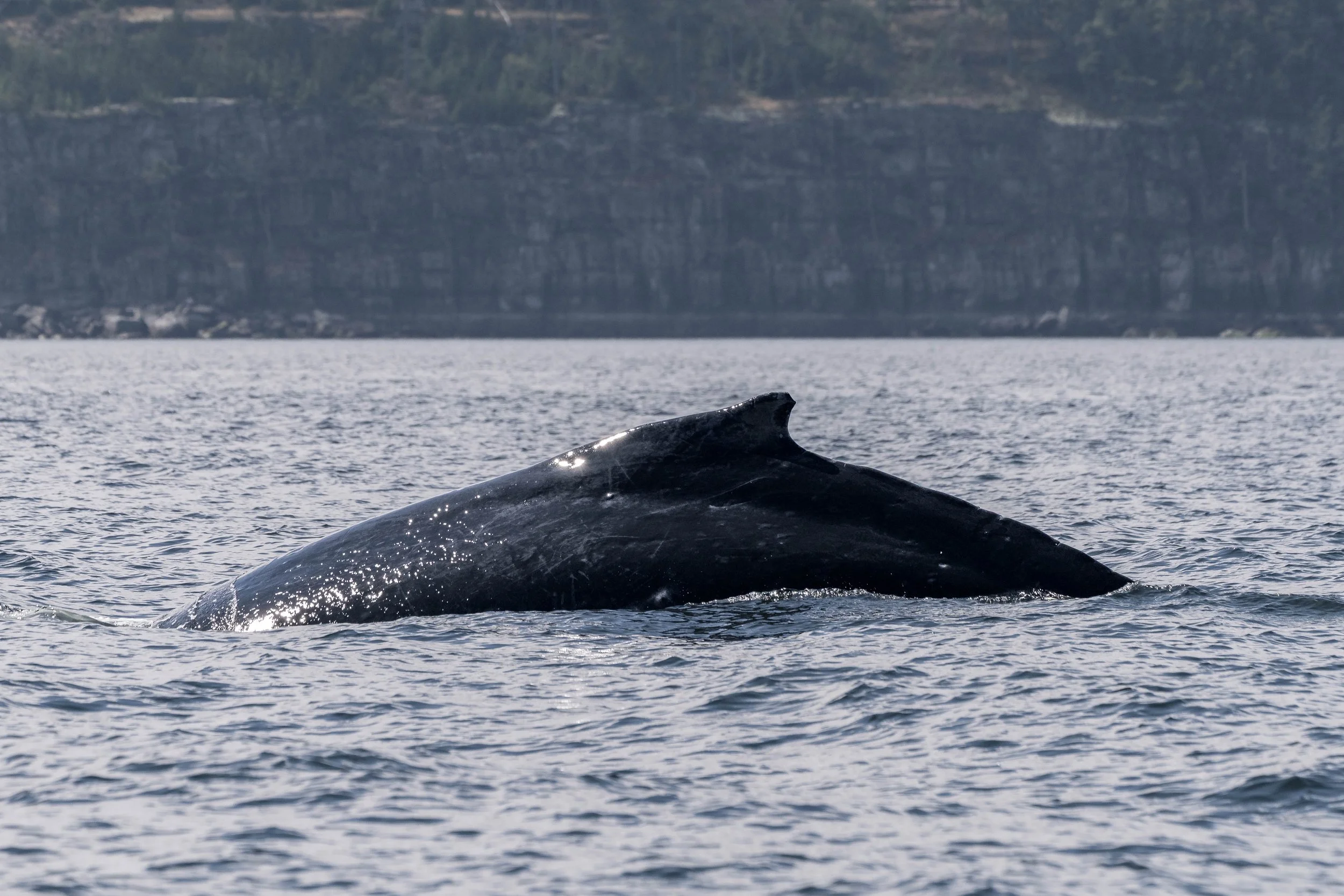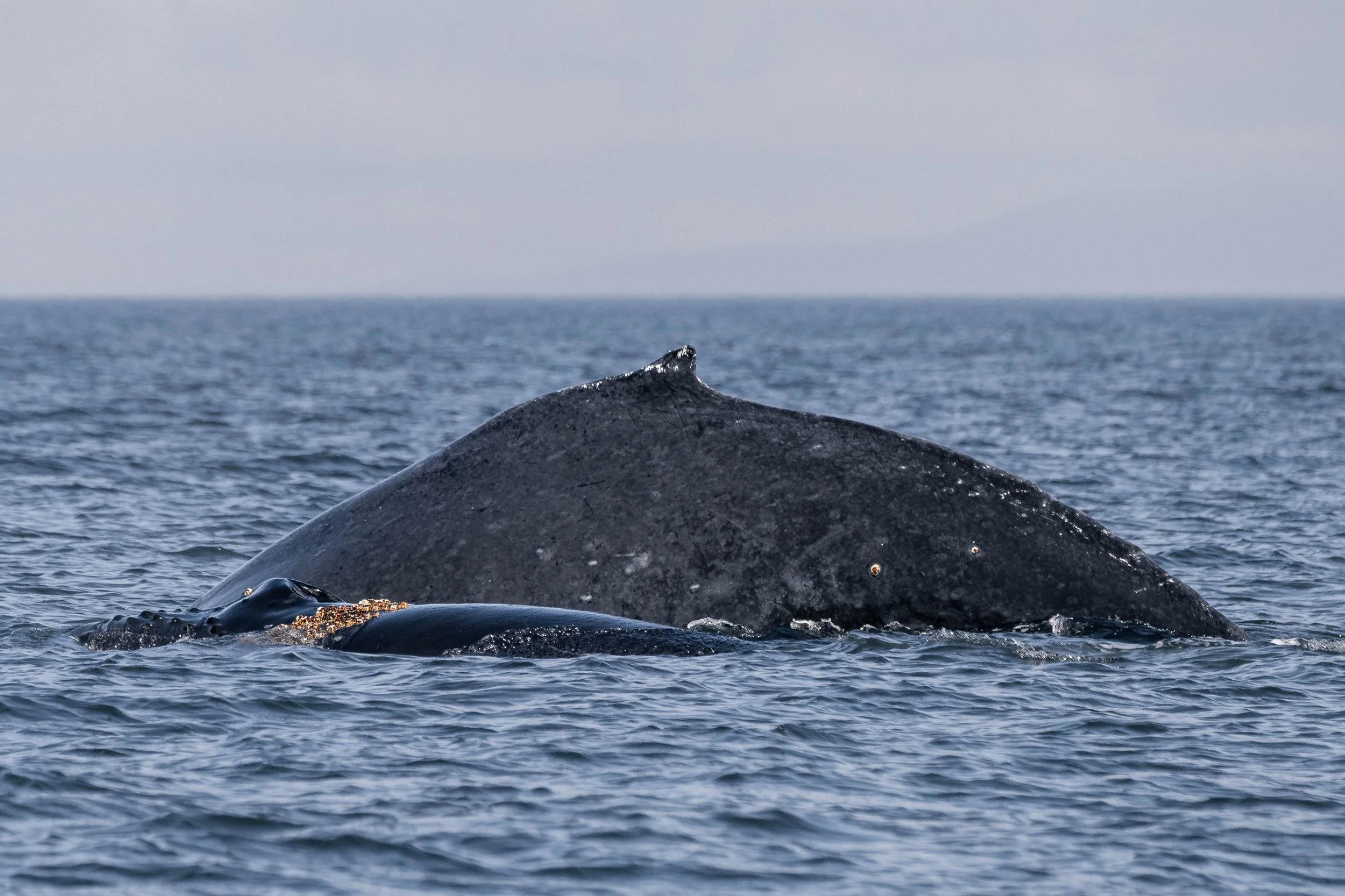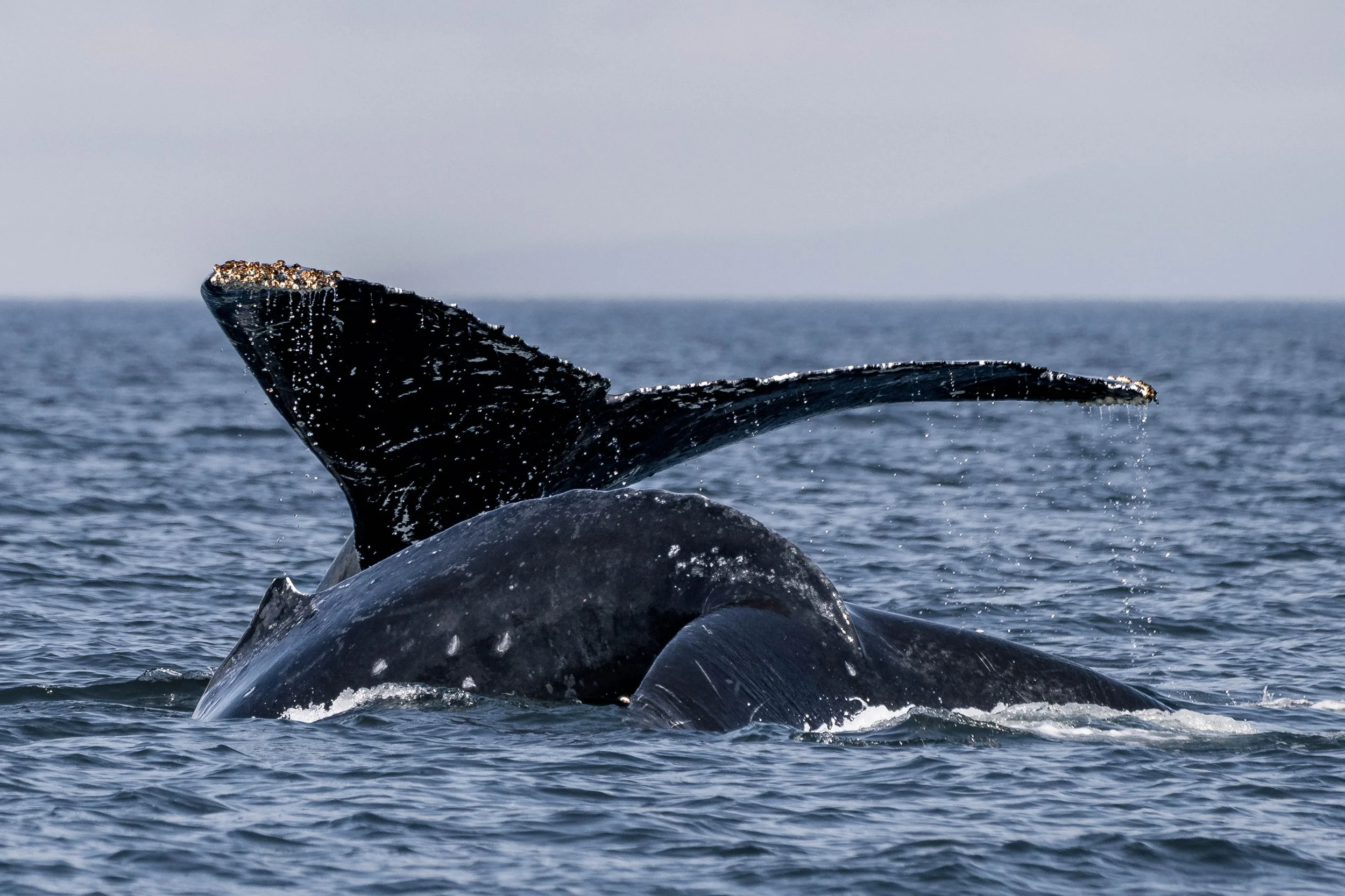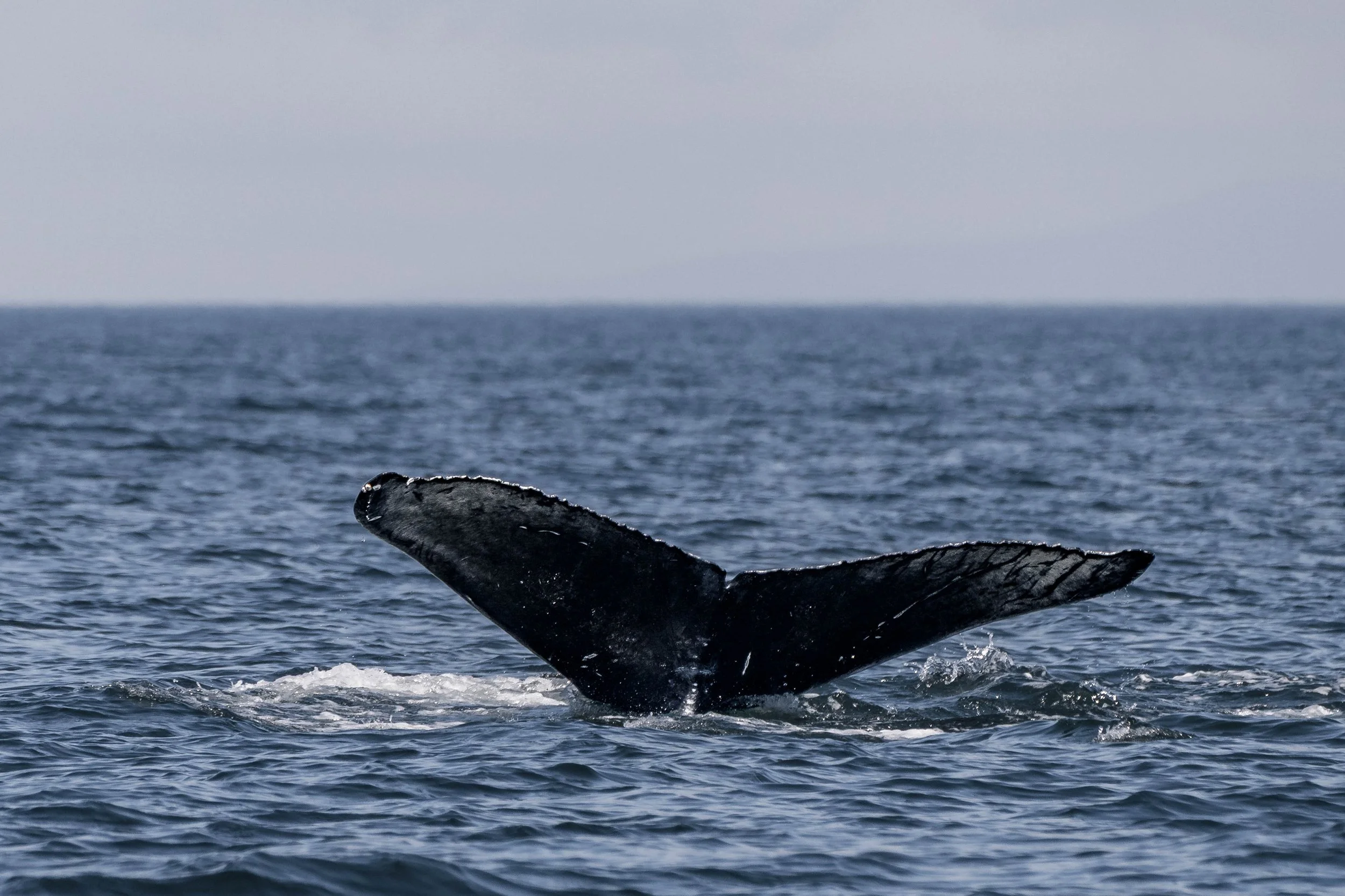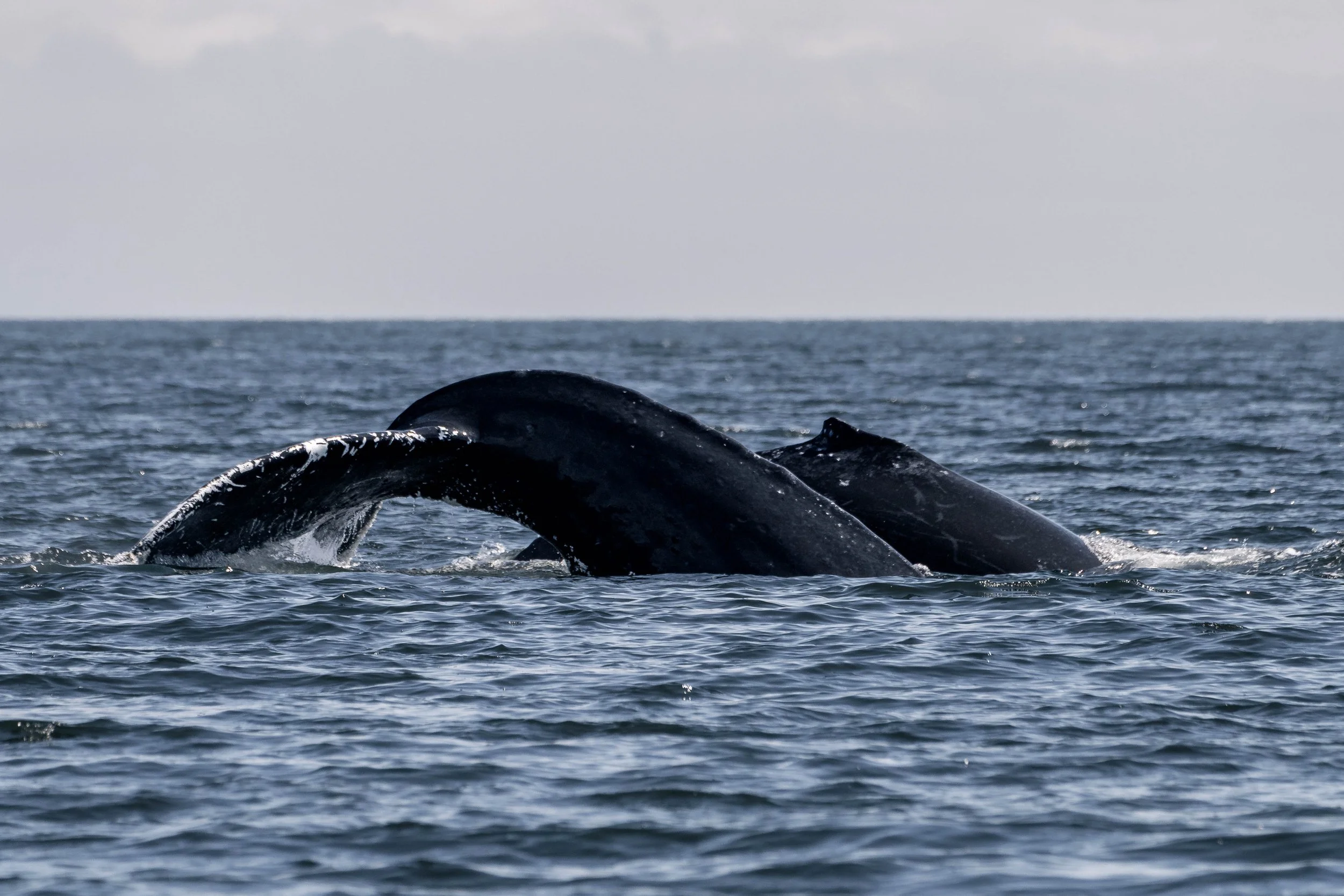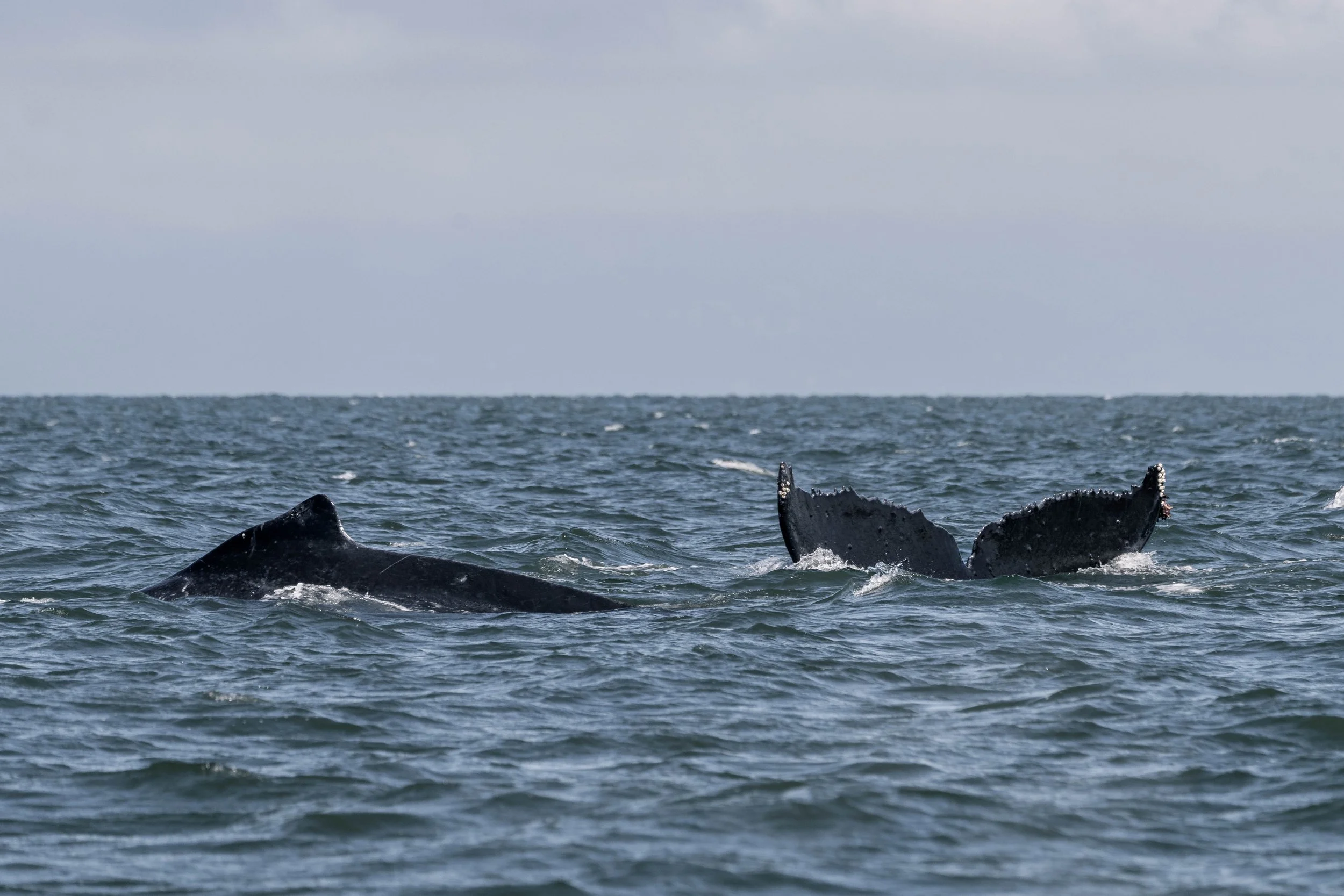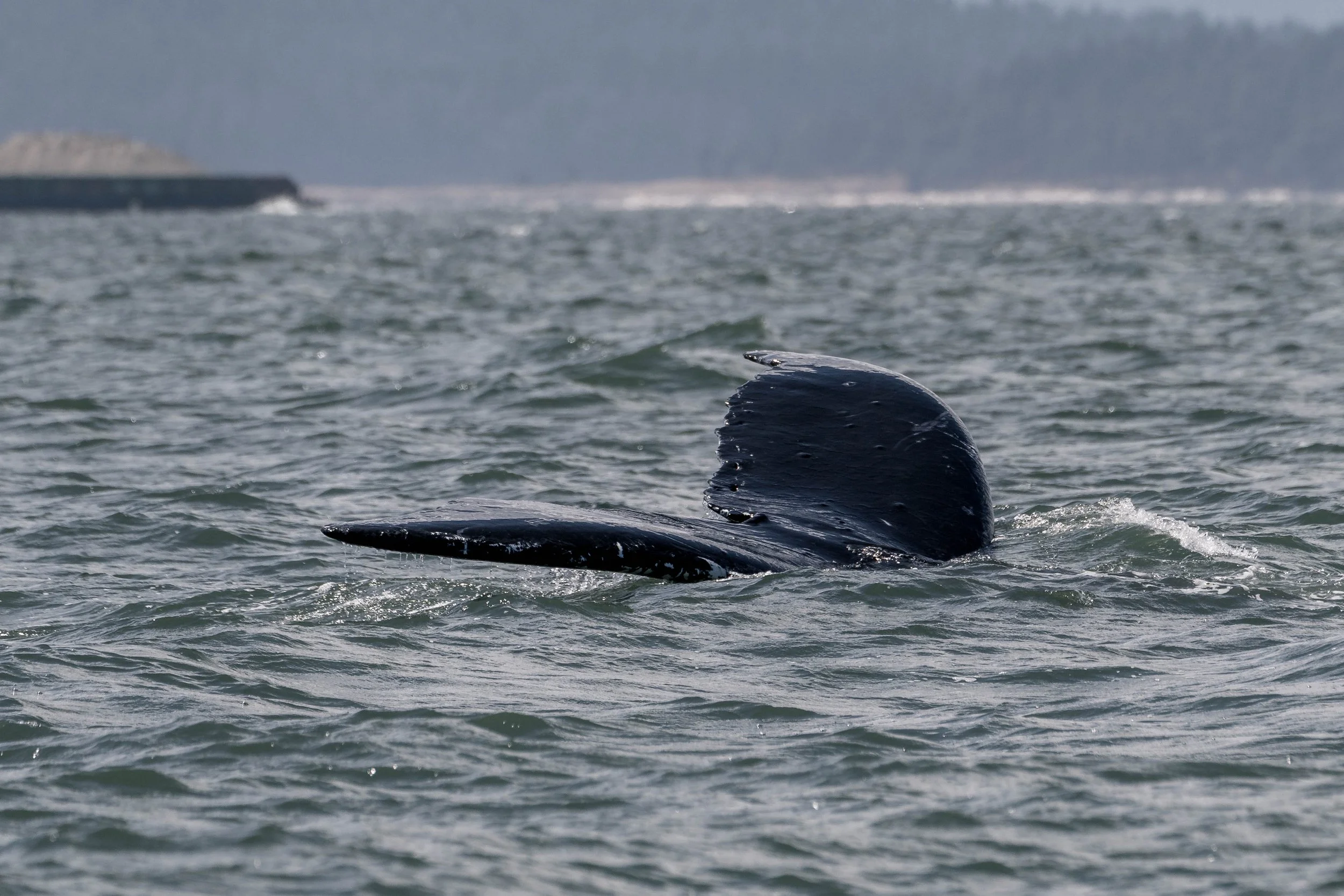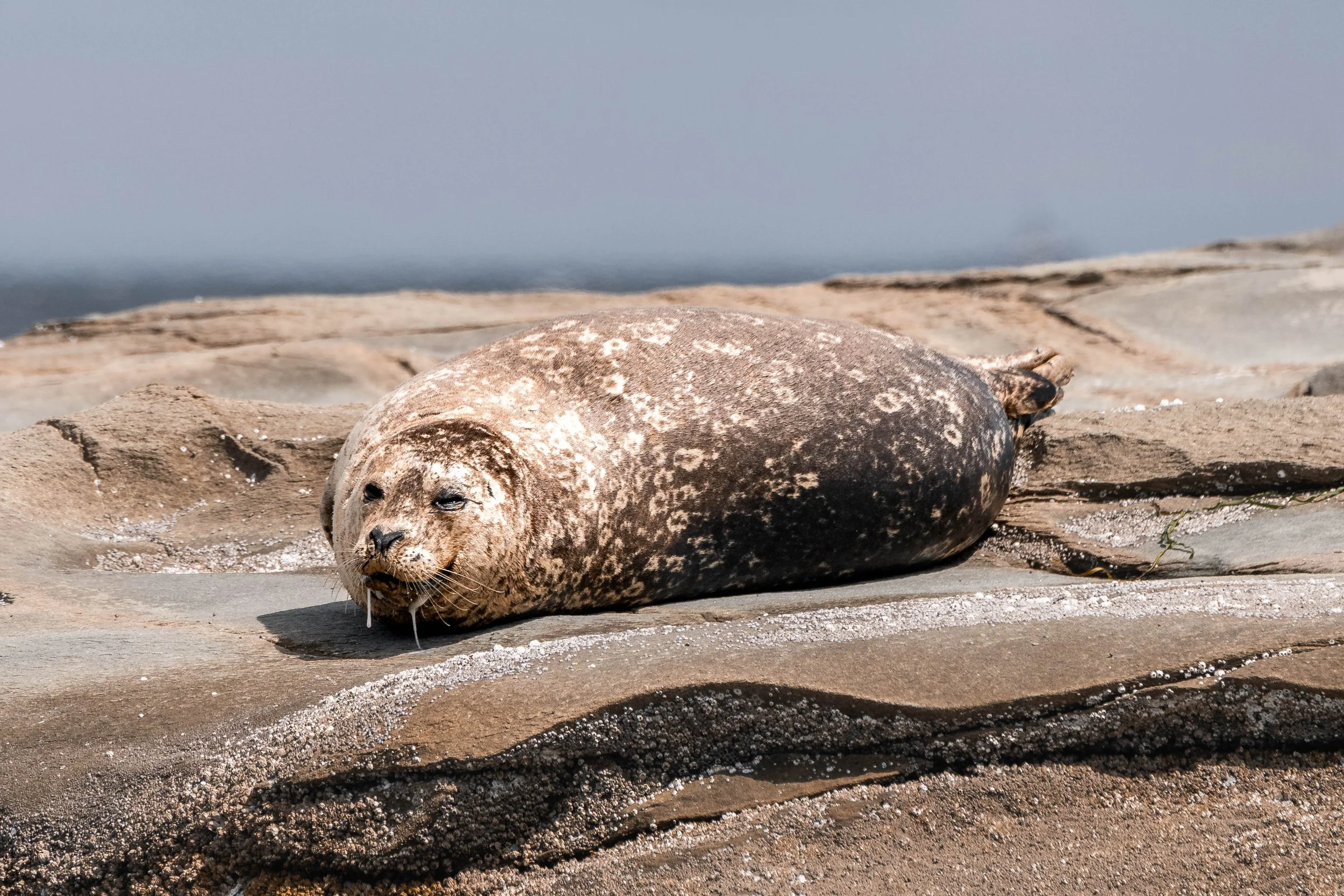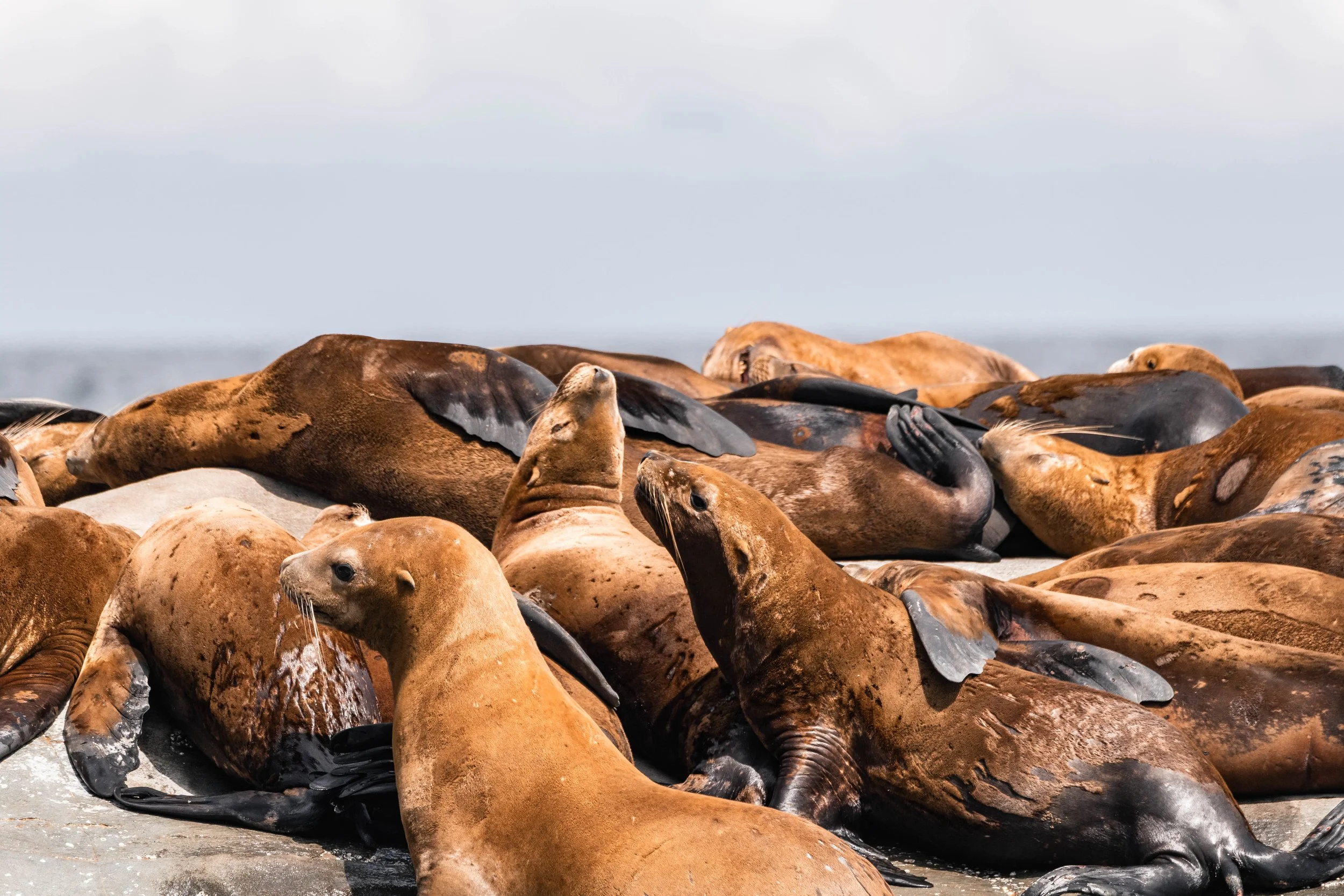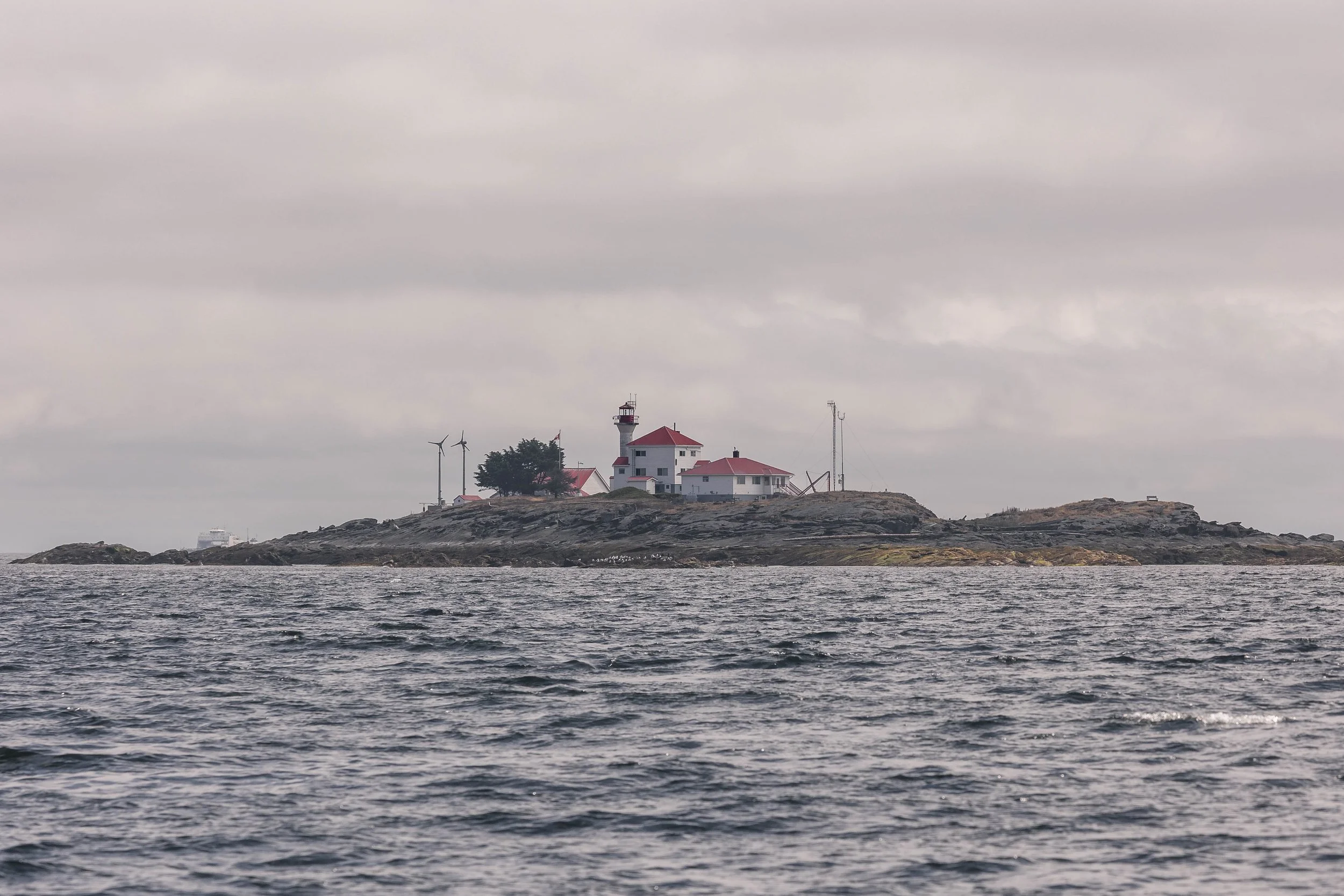August 6, 2025, 10:30 AM - A very whale-y time by Gabriola Island
It was a whalepalooza out in the Strait when we began adventuring around, searching for whale sightings. Heading back over to the “Nursery” (a little area north of Gabriola where mothers and calves have been frequenting), we peeked around, eager to see if the area was active again today… and we were correct, it was bustling with activity! Over the past several years, we’ve watched the population in the Salish Sea grow, and now it feels like there are humpbacks almost everywhere we look!
With dorsals cutting through the waters all around us, and huge flukes with cascading waterfalls rolling off their fluke tips to gracefully dive into the water, our Naturalists started snapping away, eager to identify which whales we were travelling with. While we watched, all the whales were mingling together, but they ended up breaking off into two separate groups. Our open boat, Cascadia, stayed with one group while Kula observed the others. Cascadia identified their group as Niagara (BCY0057), Professor X/Abyss (BCX1965), Kappa (BCX0158) and Kappiroto (BCX0158 calf 2025). Kula’s group was identified as Hendrix (BCY1278), Ghost (BCX1333), Ghost’s Calf (BCX1333 calf 2025), and Crater/Mensa (BCX1565). These whales were all busy travelling along, diving and fluking, as we observed them.
This is now Ghost’s fourth known calf, with her giving birth every odd year since 2019 (2019: Shade, 2021: Wisp, 2023: Specter, 2025: this calf!) - if this consistent mother keeps this up, we hope to see another calf in 2027! You may notice that this family’s names all have similar vibes - they all match the ‘spooky’ vibe. What do you think would be a good name for her 2025 calf?
Kappa is an interesting case for our female humpbacks. With her first sighting being way back in 1997, you would think she would have quite a large family tree like Big Mama. However, Kappa’s first documented case of a calf travelling with her wasn’t until 2022, an incredible 25 years after her initial sighting. Kappa may have had unsuccessful births in previous years that we do not know about, or she may have held off until she was a bit more mature to reproduce. The reproductive life of humpbacks is something we are still learning about, with many details of it shrouded in mystery. Previously, it was believed that humpbacks hit sexual maturity and can begin reproducing between 6 and 10 years old. However, one of our young humpbacks, named Olympus, was shockingly only 4 years old when she became pregnant, leading to her giving birth at only 5 years old!
Shortly after, Cascadia encountered another pair of humpbacks meandering along. These two were identified as Twinning (BCX1207) and Bond (BCX1640). While we observed them, they were diving and travelling close together. It is quite possible they were heading down into deeper waters to feed, as their prey may be far down in the water column right now. After watching the pair for a bit, we parted ways with them and continued our adventures elsewhere.
The next stop was over to a beautiful area, hilariously known as “Stinky Rocks”. Here, several different pinnipeds (fin-footed mammals) snooze and rest on the rocks. The Steller Sea Lions were ‘crowd surfing’ over each other, fighting for the best spots on the rocks. The Harbour Seals, on the other hand, were quietly enjoying themselves, dozing away and enjoying the sunshine. Our pinniped populations are now at a healthy population, after recovering from culls initiated back in the 1960s. This bounce back has also led to an increase in the Transient/Biggs orca population - another incredible example of the power of nature to balance itself out!
Please enjoy this trip’s photos taken by Marine Naturalists Val Watson and Jordan Robinson!
Hendrix’s fluke. Photo by Jordan Robinson.
Niagara’s fluke. Photo by Jordan Robinson.
Crater/Mensa’s fluke as the dove far away from us! Photo by Jordan Robinson.
Niagara’s dorsal fin. Photo by Jordan Robinson.
Niagara’s white patch on the top of his fluke makes him easily identifiable. Photo by Jordan Robinson.
Niagara’s fluke. Photo by Jordan Robinson.
Kappa with her tiny calf Kappiroto fluking behind her. Photo by Jordan Robinson.
Kappa diving. Photo by Jordan Robinson.
Niagara (back) and Professor X (front). Photo by Val Watson.
Professor X’s dorsal fin. Photo by Val Watson.
Niagara’s dorsal fin. Photo by Val Watson.
Kappa with Kappiroto (and their little barnacle necklace) visible beside her. Photo by Val Watson.
Kappa fluking, with Kappiroto beginning to dive. Photo by Val Watson.
Kappiroto’s fluke. Photo by Val Watson.
Kappa and Kappiroto. Photo by Val Watson.
Bond (left) and Twinning (right). Photo by Val Watson.
Bond diving. Photo by Val Watson.
Sleepily snoozing on the rocks. Photo by Val Watson.
A very rotund Harbour Seal. Photo by Val Watson.
A bob of Harbour Seals watching us. Photo by Val Watson.
The Steller Sea Lions snoozing up on Stinky Rocks. Photo by Val Watson.
Entrance Island. Photo by Jordan Robinson.


